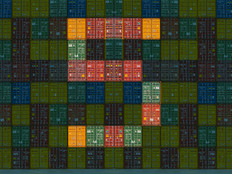Converged Infrastructure Unifies the Data Center
Between 2008 and 2009, St. Edward’s University in Austin, Texas, hit a wall with unpredictable network performance. An analysis committee attributed the problem to a lack of manageability and control.
“We had a highly dysfunctional network with six different vendors’ legacy switches,” says Gaston Hebert, director of information technology resources at the institution.
Although the university’s network technicians were highly skilled, try as they might, they couldn’t get the switches to communicate. This left the college open to malware. “We had no visibility across the enterprise, so the only answer was to remove each part of the student network until problems were remediated,” Hebert says.
To alleviate downtime, security risks and other harmful outcomes that a disjointed network creates, St. Edward’s has been working toward a fully converged infrastructure for the 6,500-user institution.
Building Blocks
Converged infrastructure is the blending of servers, storage and switches into a fabric that is optimized to support virtualization, cloud computing and other initiatives. Rather than having sprawling racks of disparate hardware, converged infrastructure offers a unified and easily managed data center approach.
“Converged infrastructure is a compelling alternative to traditional data centers because it saves a lot in terms of deployment and initial configuration,” says Jim Frey, managing research director at Enterprise Management Associates.
Currently, most of the major vendors, including Cisco Systems, EMC, Fujitsu, HP and NetApp, offer some type of converged infrastructure.
Frey believes converged infrastructure will be integral as significant, disruptive projects, including virtual desktop infrastructure, one-to-one notebook programs and rich-media distance learning, gain popularity.
Some converged infrastructure solutions take an all-in-one approach, in which servers, switches and storage are self-contained. For example, Cisco, VMware and EMC integrated piece parts into the trio’s VCE Vblock product. However, St. Edward’s needed a solution that would unify architecture in stages.
The network analysis committee chose Enterasys’ OneFabric platform to lay atop its existing network of switches from Cisco, Juniper Networks, Enterasys and other manufacturers. The management architecture gives Hebert complete visibility and workable interoperability among network components. For instance, he can impose security policies across the entire wired and wireless enterprise, limiting what can be seen and accessed, and by whom.
Such unification has enabled St. Edward’s to mesh not only its network, but also its technical staff. Technicians can view all switches from a single console. “We no longer have to call up separate management tools to monitor the core, distribution and wireless segments,” Hebert says.
The university’s next mission is to use Enterasys’ VMware tab within OneFabric to blend in server management. With more than 180 virtual servers running admissions, financial aid, learning, food service, conference center and other applications, managing servers and the network as one will be critically important going forward, Hebert says.
“The complexity between servers, the network and storage is well understood. Any interruption in network connectivity between servers and storage ends up with the SAN in read-only and severely impacts the BlackBoard learning management system, ERP and other essential programs,” Hebert explains. That is a problem the university cannot tolerate, as its strategic plan comprises a new state-of-the-art data center that will help it to morph from a midsize, regional liberal arts college into a 24x7 global institution.
Homegrown Strategy
Oakland University in Rochester, Mich., also seeks to meet increased demands through converged infrastructure. “We have incredible need for consolidation, agility, fast provisioning and advanced throughput,” says Brian Paige, executive director of networking and technology at the university.
Paige and his colleague Steve Glowacki, director of systems engineering, attempt to cost-effectively keep up with new application expectations from the more than 60 other IT professionals who represent several divisions, schools, and a college, each of which have their own IT group. To better serve the needs of nearly 20,000 students, they are architecting a homegrown converged infrastructure that marries Cisco switches with NetApp storage arrays and VMware servers. While the two see the advantage of the meta-management offered by packaged solutions, they have found them cost-prohibitive and subject to vendor lock-in.
EMA’s Frey is familiar with such concerns. Though the upfront cost might be jarring, he believes packaged converged infrastructure solutions will be less expensive than buying all the necessary piece parts and will help deploy projects much faster.
Converged infrastructure requires 85% less space than traditional servers and 85% less power for operation and cooling
SOURCE: VCE
Smart Steps for Deploying Converged Infrastructure
Migrating to or adding converged infrastructure to your network might seem expensive and overwhelming. These tips gathered from IT teams in the trenches will help ease your concerns.
- Virtualize as much as you can ahead of time. Many colleges and universities have already begun to work with server virtualization, which will make the migration to converged infrastructure faster and easier to manage.
- Study power and heating/cooling capabilities. The savings in HVAC and electricity provided by converged infrastructure will make part, if not all, of your business case for the technology.
- Use what you already have. Converged infrastructure does not require brand-new, million-dollar, state-of-the-art facilities. The condensed, streamlined, energy-efficient architecture enables institutions to eke out more from their existing server rooms.
- Cross-train your IT staff. In the new world of converged infrastructure, you no longer need separate server, switch and storage experts. Blend your IT staff into a single pool of network talent for maximum coverage and flexibility.







